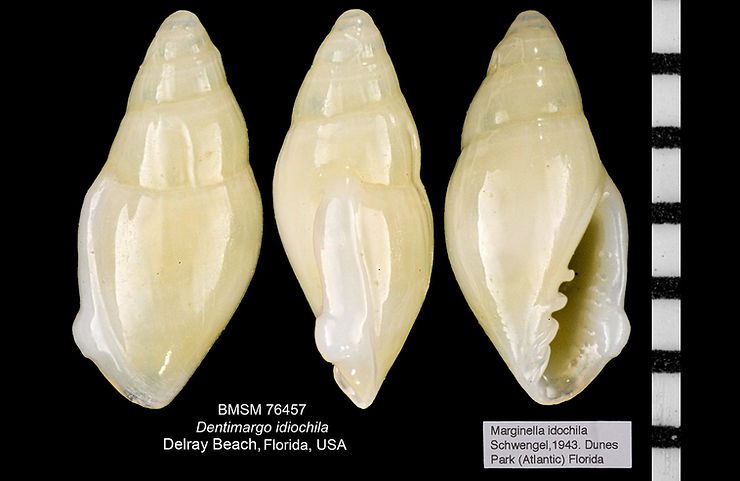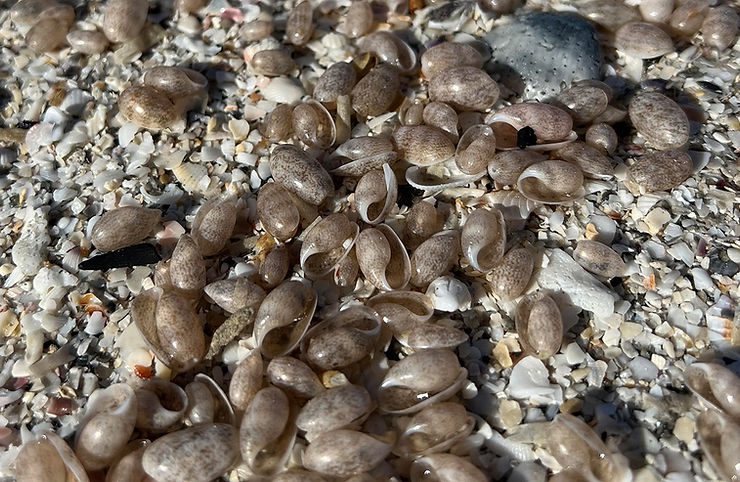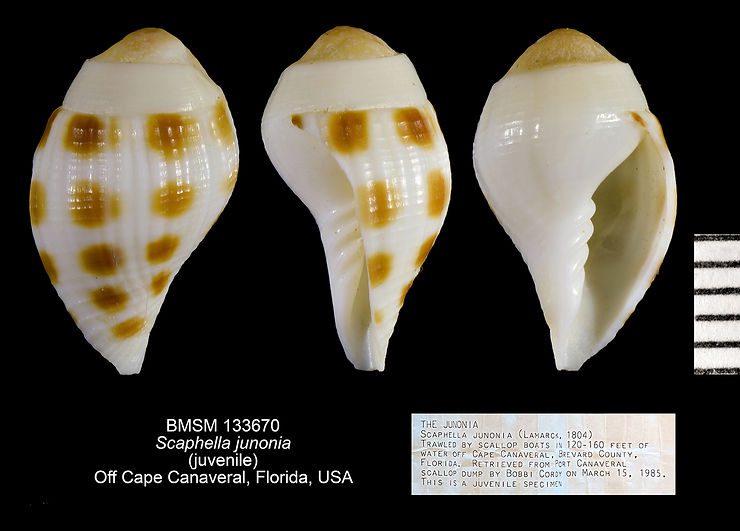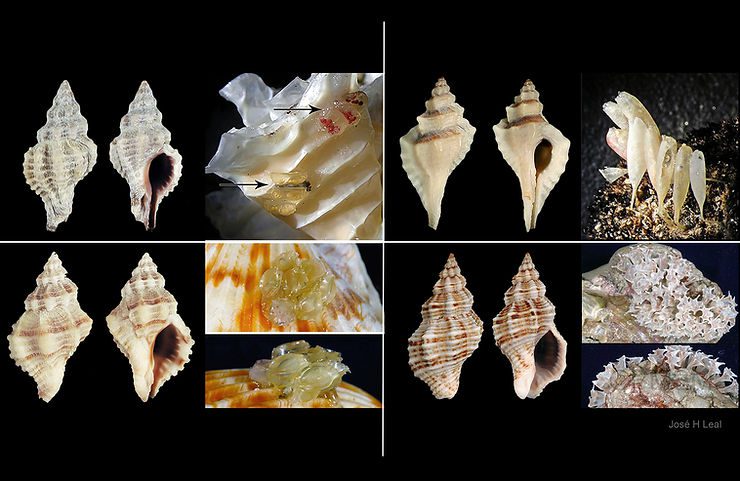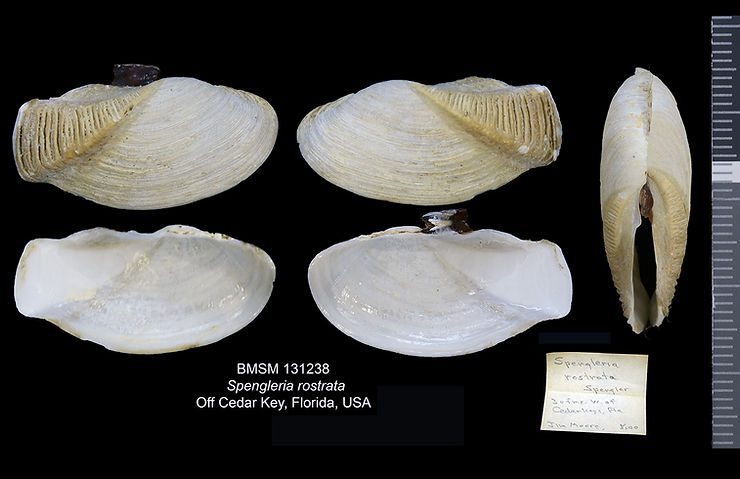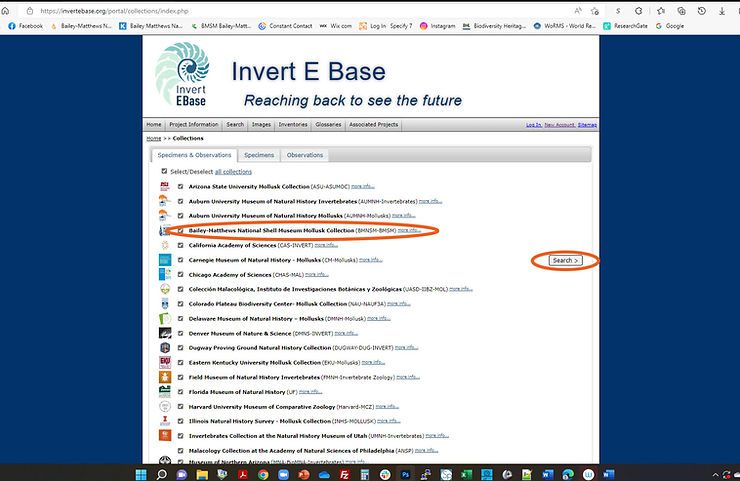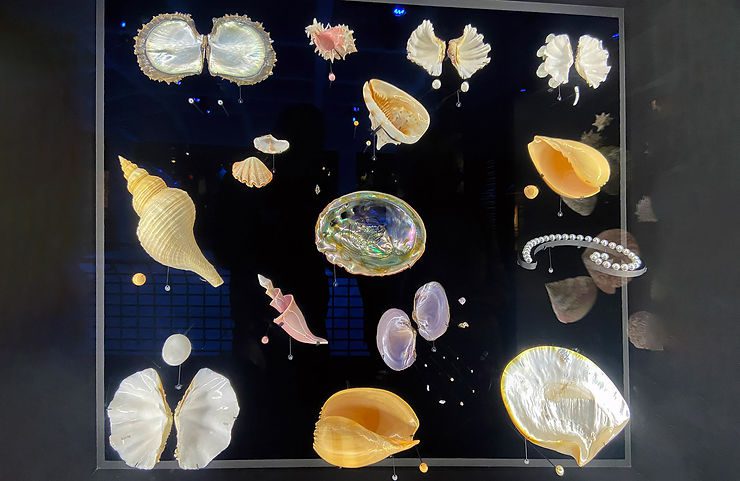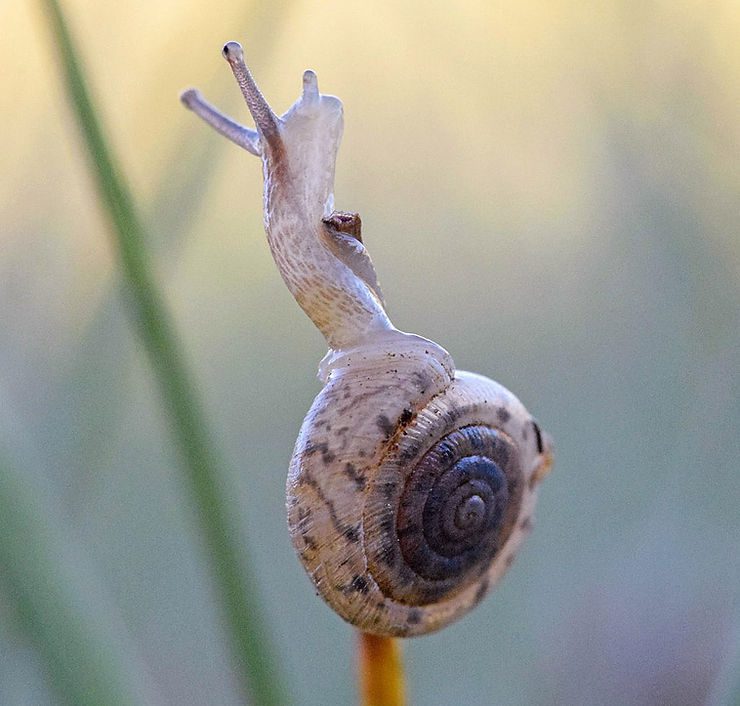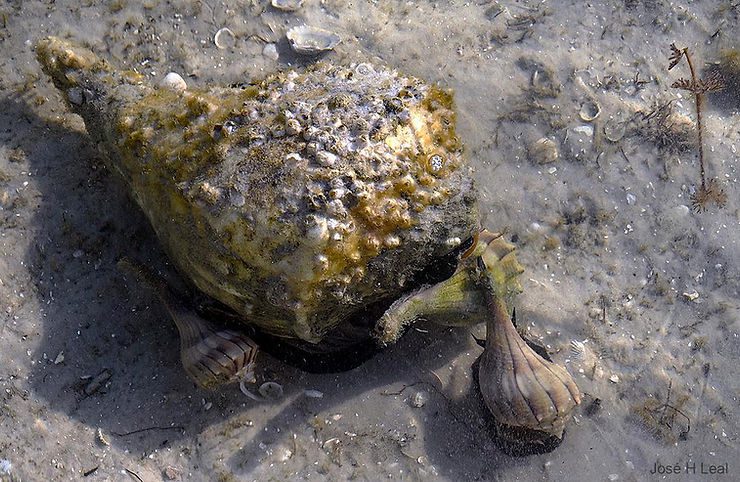
The Lightning Whelk’s Reverse Harem
Lightning Whelks, Sinistrofulgur sinistrum, are special in several ways. Not only are their shells left-handed (shell opens to the left) but, during mating season in late fall and winter, several males may converge on a much-larger female to fertilize her eggs. During the mating event, each male will fertilize a different batch of eggs in the same female. When the young start hatching in late winter-early fall, a single string of egg capsules will yield children from the same mother, but from di
